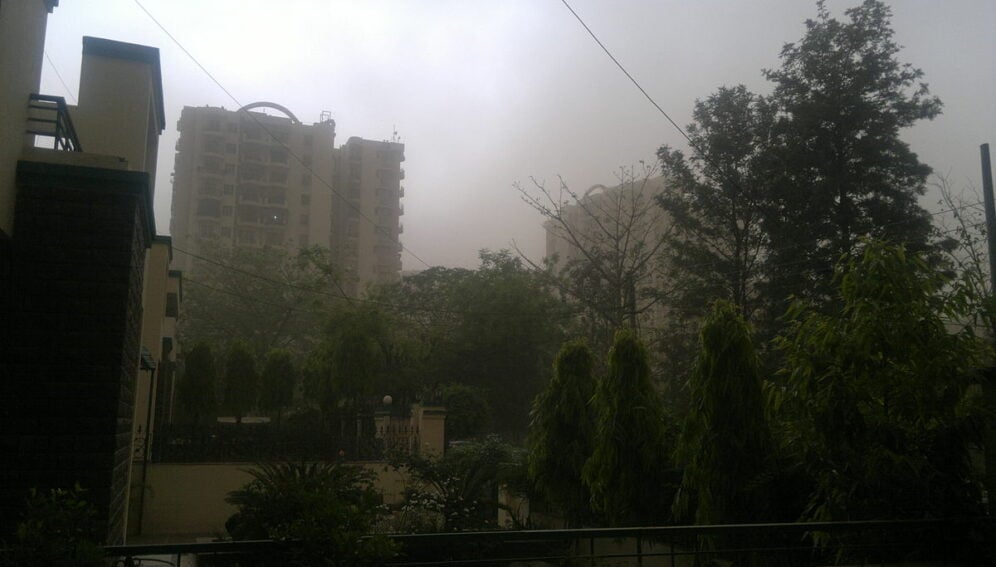29/04/22
India awaits dust storms to fight scorching heat waves

By: Ranjit Devraj
Send to a friend
The details you provide on this page will not be used to send unsolicited email, and will not be sold to a 3rd party. See privacy policy.
[NEW DELHI] Dust storms are unpleasant but they appear to be the only relief on the horizon for people in northern India sweltering under temperatures that have already crossed 44 degrees Celsius and are expected to climb higher as summer progresses.
“We are expecting dust storms after Friday (29 April) and that should bring some respite from the present hot spell starting 1 May,” Rajendra Kumar Jenamani, a scientist specialising in heatwaves at the India Meteorological Department, tells SciDev.Net.
There are those who say that dust may be a remedy worse than heat, given that grit getting into the eyes and nose can cause intense irritation and discomfort. Dust particles smaller than 10 microns can enter the respiratory tract and trigger asthma, rhinitis and even pneumonia since microbes ride on them. At 2.5 microns dust becomes ‘respirable’ and passes into the bloodstream via lung capillaries.
“We are prepared for heatwave conditions at the meteorological department and advise that only normal precautions need be taken — as with every summer”
Rajendra Kumar Jenamani, India Meteorological Department
Such are the vagaries of climate and weather in Northern India (including Pakistan, Nepal and Bangladesh and home to a billion people) that instead of enjoying the pleasant spring that normally follows winter, people are reduced to wishing for a dust storm to deliver them from the miseries of unseasonal heat.
On Wednesday, Prime Minister Narendra Modi convened a virtual conference of the heads of provincial governments to warn them of rising temperatures “much earlier than usual” and asked them to take measures to mitigate impacts.
March, when spring should have been in the air, turned out to be the hottest in the meteorological office’s 122 years of functioning, with hot winds blowing in through April. Dust storms, though, are dense enough to block the sun’s rays and are often accompanied by rain, bringing about rapid cooling.
Jenamani was, however, optimistic that, though spring has played truant, summer temperatures will prove to be normal. “We are prepared for heatwave conditions at the meteorological department and advise that only normal precautions need be taken — as with every summer.”
According to Jenamani local factors — such as the ‘western disturbances’ that normally brings in rain from the Mediterranean during March — were scanty this year. The other phenomenon he mentioned was ‘anti-cyclones’ in the desert state of Rajasthan that bring hot, dry weather caused by high pressure systems in the atmosphere.
Other scientists such as Roxy Mathew Koll at the Indian Institute of Tropical Meteorology, Pune, prefer to blame global warming. The UN Intergovernmental Panel on Climate Change’s sixth assessment report said that human influence has warmed the atmosphere, ocean and land and caused widespread, rapid changes.
The present concern is the impact on wheat crops sown in winter and being harvested, especially in Haryana, Madhya Pradesh, Punjab and Rajasthan. Farmers in these states are already reporting a 20 to 40 per cent drop in grain size and overall yield by weight. That isn’t good news for India’s farming-dependent economy.
In February, the government had forecast a bumper 111.32 million-tonne wheat harvest this year and planned to increase exports of the grain to make up for losses caused by the war in Ukraine — a major wheat producer.
India’s commerce minister, Piyush Goyal, announced last week that India would be exporting anywhere between 10 and 15 million tonnes of wheat this year. On average, India produces around 100 million tonnes of wheat annually, but much of it is consumed locally.
Will such bumper harvests that keep India’s granaries overflowing continue? That will depend on whether this year’s heatwaves were actually caused by global warming or were just a freak occurrence — the jury is out on that.
This piece was produced by SciDev.Net’s Asia & Pacific desk.















